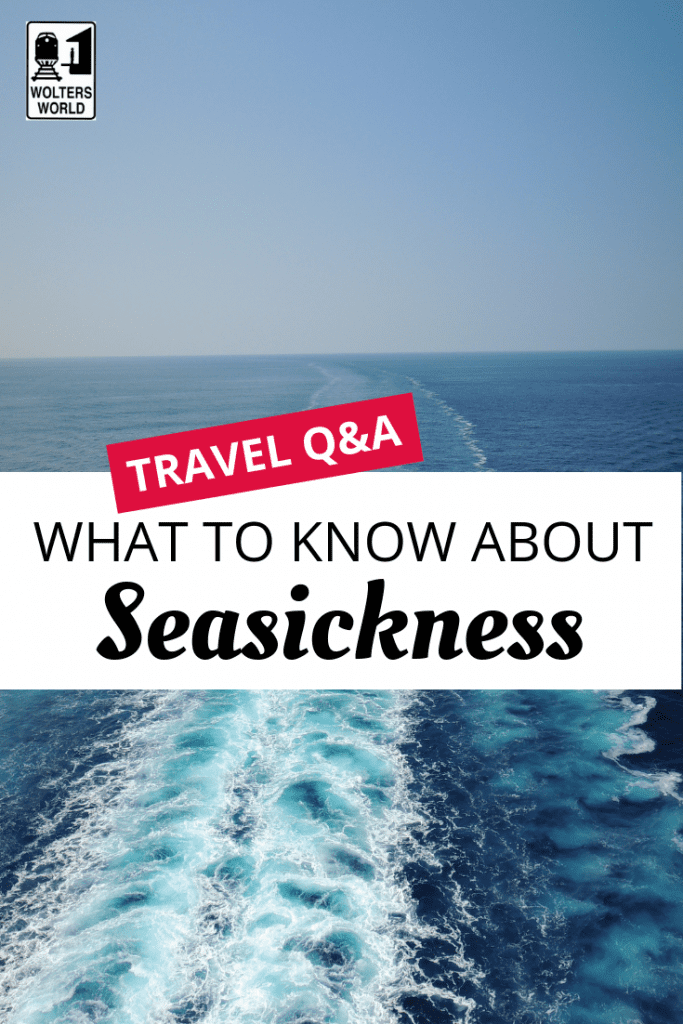Hey there, fellow travelers! Today we’re in Croatia, on a cruise, and I thought it would be a good time to talk about seasickness. Not all travel is sunshine and rainbows, so I want our fans to be prepared for some of the downsides of travel, too. Many travelers get seasick on a cruise, so today we’re talking about things you can do to prevent getting seasick on a cruise, and if that fails, treating seasickness.
What Are the Symptoms of Seasickness?
You may feel nauseous, like you have no balance and you may feel like you are on the verge of vomiting. And then there are stomach cramps. These can all be the signs of seasickness.
When Does Seasickness Happen?
If you are coming to Europe for a river cruise, you don’t have to worry as much about seasickness because the rivers don’t have big waves. Where you might experience seasickness is out on a coastal cruise or an ocean cruise.
Many people think the bigger cruise ships have less movement and those passengers won’t get seasick. However, everyone is different. Jocelyn gets sick on the bigger cruise ships rather than the small ones.
How Can I Prevent Seasickness?
Picking the right cabin can make a huge difference in the severity of motion sickness that you feel during your cruise. You want to try to pick a cabin in the center and middle of the boat, as close to the actual center as possible. This area experiences the least amount of movement. Having a window you can look out will also help.
Read: What to Know Before Your First Cruise

How Can I Treat Seasickness?
Even if you don’t think you’ll get seasick on a cruise, it’s better to be prepared just in case. There are tons of seasickness remedies, from holistic treatments, over-the-counter treatments to prescription drugs for seasickness. The most common product for treating seasickness is Dramamine. Some medications require that you take them before you get on the boat, so read the instructions.
There are also seasickness patches that you place on the skin to treat seasickness. These offer a slow release of medicine to help prevent symptoms. The prescription patch that goes behind your ear is the best option. (Note: Mark is not a doctor, so please speak with your doctor if you are concerned about seasickness. This advice is based on traveler’s tales.)
For a more natural approach to treating seasickness, ginger is something many people use. You can get ginger in many forms; powder to mix in a drink, ginger chews or gum, and even ginger ale can work.
Seabands are another method for treating seasickness. These bands work with the pressure point in your wrist to prevent seasickness symptoms.
What If I Didn’t Bring Anything to Treat Seasickness?
If you’re out on an excursion, you can just visit the local pharmacy and tell them you have seasickness; they can point out the proper medication. On a larger cruise, the shops will definitely sell different remedies for treating seasickness, and if you’re on a smaller cruise, just ask the crew. They will likely have something they can give you. The really big ships even have medical personnel on board if you think you need to speak with a doctor.
Watch: What to Pack for a Cruise

I hope this helps our fellow travelers who are getting ready to go on a cruise. Hopefully you won’t get seasick at all, but at least you will be prepared and know what to do when your tummy starts to rumble. For more travel tips and guides, check out these blog posts and videos:
